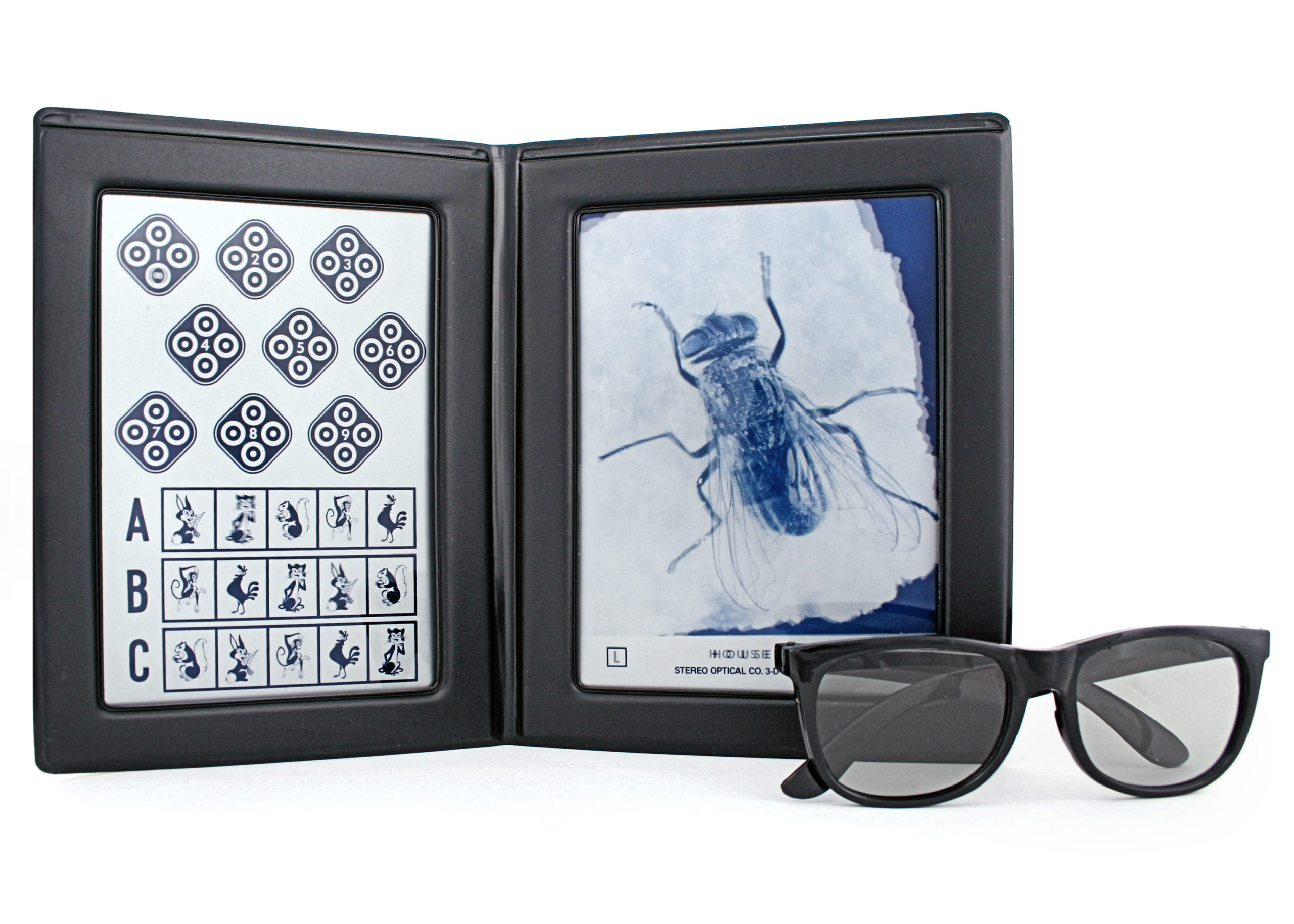 |
|
Study suggests that stereoacuity can be a good prognostic indicator of treatment outcomes in patients with anisometropic amblyopia. Photo: Stereo Optical. Click image to enlarge. |
Authors of a recent observational study aimed to identify ocular and visual perceptive risk factors related to treatment results following refractive correction and patching in children with anisometropic amblyopia between the ages of four and 14. Their findings, published in BMC Ophthalmology, indicated that larger vertical perceptual eye position deviation and worse stereoacuity were the most influential treatment failure risk factors in children with anisometropic amblyopia.
A total of 102 children with newly diagnosed anisometropic amblyopia were recruited. Successful treatment of amblyopia was defined as a final best-corrected visual acuity (BCVA) better than or equal to 0.1logMAR and amblyopic eye BCVA within one line of the sound eye BCVA by the end of the treatment period. BCVA, cycloplegic refraction, stereoacuity, perceptual eye position and interocular suppression were measured.
Of the patients, 45.1% achieved successful treatment of amblyopia after refractive correction and patching for 10.5 months. The mean age was not significantly different between patients who were successfully and unsuccessfully treated (5.50 vs. 6.14 years, respectively). Patients who failed treatment had a significantly larger interocular difference in BCVA at the time of initial treatment (successful group: 0.33logMAR, unsuccessful group: 0.65logMAR) and after refractive adaptation (successful group: 0.15logMAR, unsuccessful group: 0.42logMAR). They also had a higher spherical equivalent (SE) of amblyopic eyes (successful group: 3.08D, unsuccessful group: 5.27D), bigger interocular difference in SE (successful group: 0.94D, unsuccessful group: 3.09D), worse stereoacuity (successful group: 2.32 log seconds of arc, unsuccessful group: 2.75 log seconds of arc), larger vertical perceptual eye position deviation (successful group: 6.41 pixel, unsuccessful group: 19.07 pixel) and deeper interocular suppression (successful group: 21.7%, unsuccessful group: 37.8%). The most influential treatment failure risk factors were larger vertical perceptual eye position deviation and worse stereoacuity.
“The vertical perceptual eye position deviation and stereoacuity, which can reflect interocular interaction, may be useful in predicting the response to therapy,” the study authors concluded in their paper.
Hong J, Kuo D, Su H, et al. Ocular and visual perceptive factors associated with treatment outcomes in patients with anisometropic amblyopia. BMC Ophthalmol. January 23, 2023. [Epub ahead of print]. |


